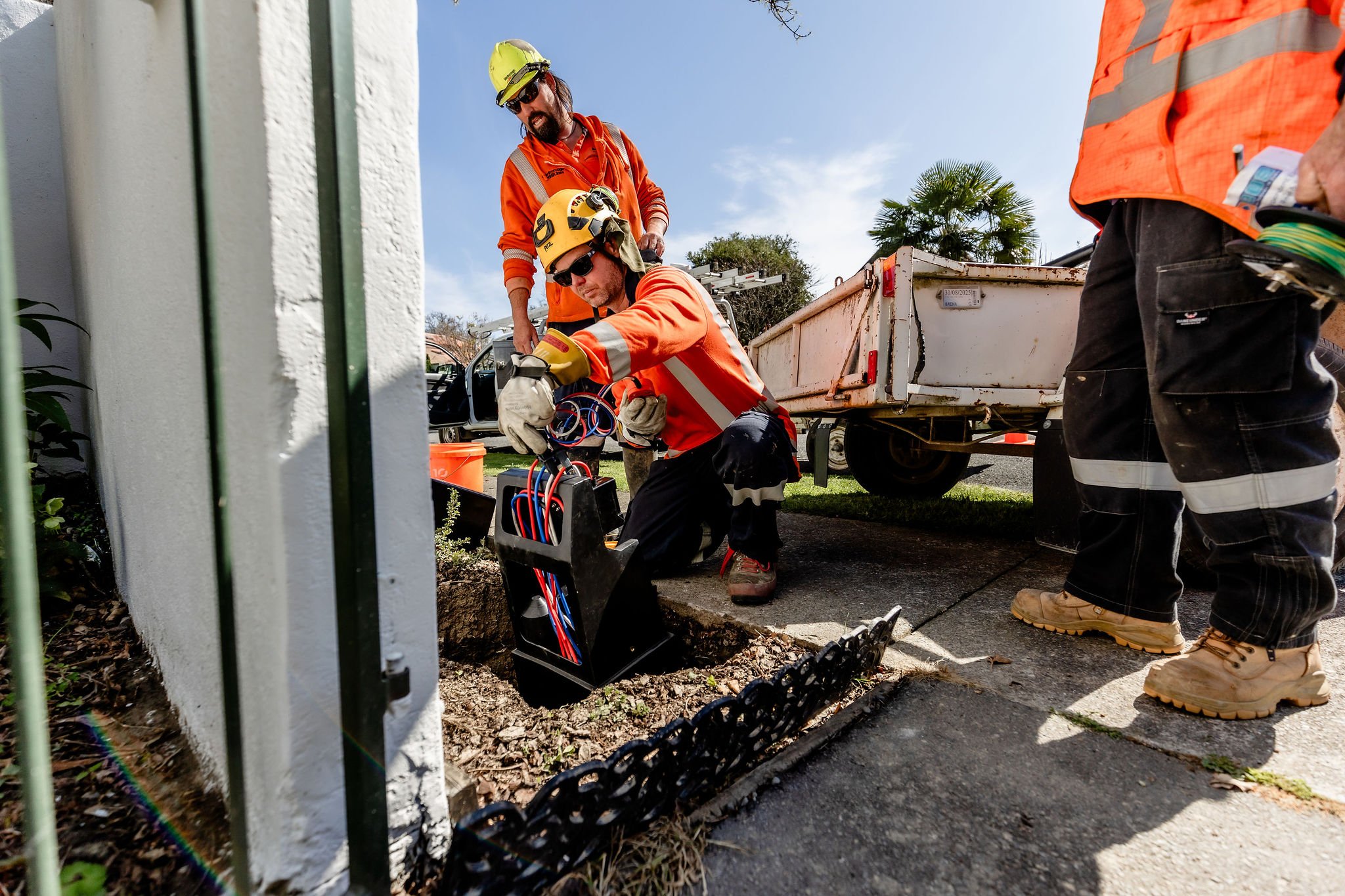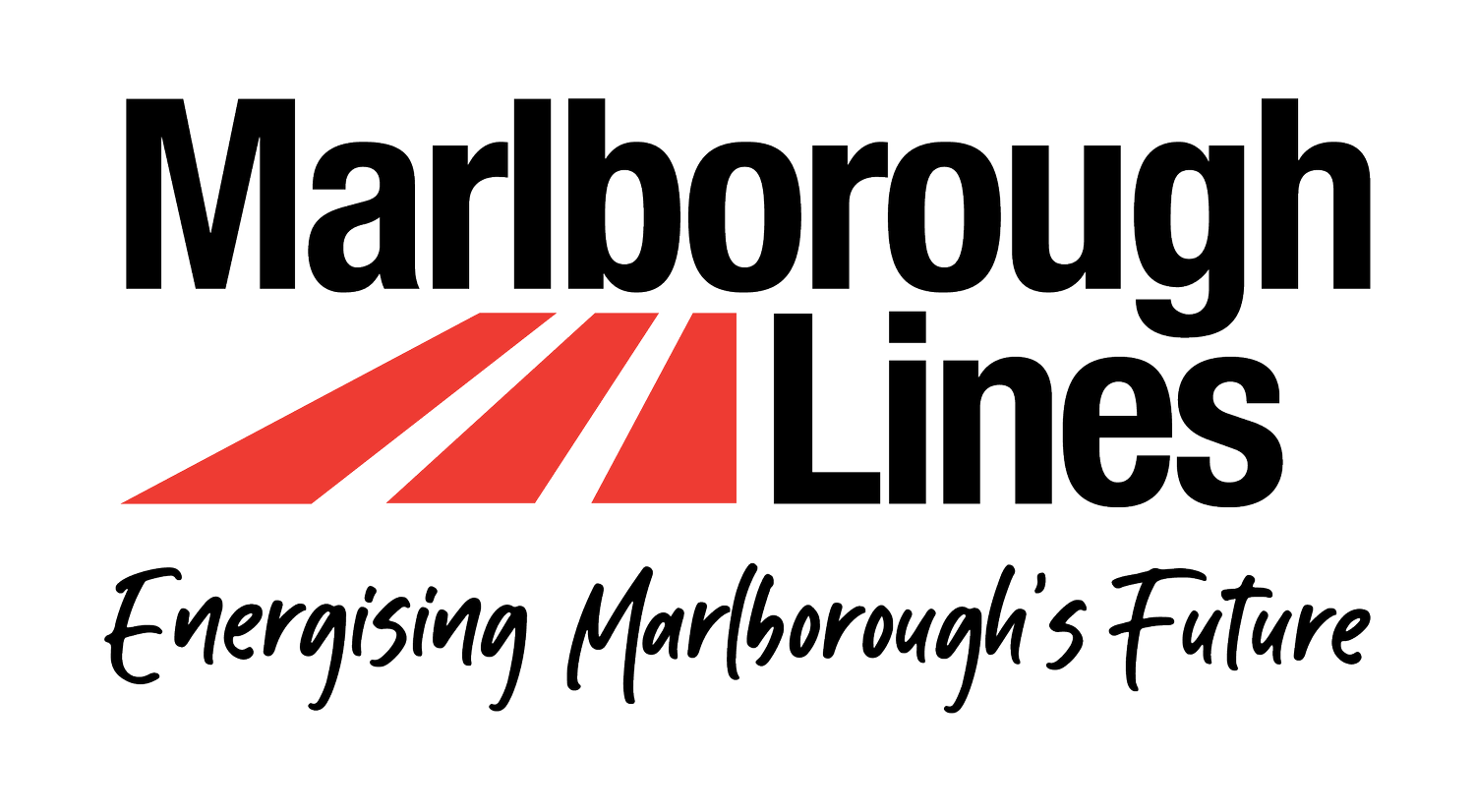
GET CONNECTED
Please note: Due to high demand, there is currently a 4-week delay in processing supply enquiries.
Connect Or Alter My Supply
Whether you just want to make an enquiry about connecting to our network or if you are ready to go
with a new connection/alteration/removal to an existing connection this is the place for you.
Please note: You only need to apply once to move from enquiry to
livening your supply. If you wish to make further changes to your livened
supply (e.g. BTS to PERM), you will need to submit a new application.
All types of requests are to be submitted using the same form.
This form also includes the decommissioning of your supply. We
recommend you check the list of requirements below before getting started.
Click on GET CONNECTED to submit your request.
PLEASE NOTE: DUE TO HIGH DEMAND, THERE IS CURRENTLY A 4-WEEK DELAY IN PROCESSING SUPPLY ENQUIRIES.
There are two options when you start an application - If you are ready to proceed, irrespective of the size of the job, then select Ready To Go.
If you are just after some information and are not really sure what your plans are or if you are after just an indicative cost then choose Initial Enquiry.
Ready To Go?
Please have the following information ready before you start your application:
Who is paying?
What is the end use of the connection?
Details of the consumer (who pays the power bill) and who their retailer is
If it is an existing connection, we need the ICP or Meter Serial Number
Site plan with all measurements
Technical details - Capacity
- Cable information
- Pump details for irrigation loads
- Any load control requirements
Enquiry Only?
If you are just after some information and are not really sure what your plans are or if you are after just an indicative cost then choose initial enquiry.
Requirements For A Site Plan
You have the option to submit a proposed site plan, a final site plan (if your cables are already laid) or no plan if you are putting a BTS at the Service Fuse Box.
If you submit a proposed site plan you must submit a final site plan within 5 days of livening.
Please include the following information on your site plan:
Cable size
Cable depth
Plot of cable route
Measurements of cable route from the boundary or fixed structure
Location of joints with measurements
Meterbox location with measurements
The process, timeframes, and cost to apply for and establish a new connection supply point may vary due to:
The location and/or nature of the connection supply point required.
Whether or not an existing network connection supply point is already available.
The number of connection supply points required.
The available capacity of our network as well as fuse and phase requirements of the connection (your electrician will provide these details).
An easement may be required to allow electricity equipment to be owned by MLL to be installed and to remain on private property. An easement provides us with ongoing access and maintenance rights in respect of that equipment.
The presence of any vegetation on the property, civil works requirements, and traffic management requirements, for example.
Current work volumes.
You should allow plenty of time for your connection application.
For a “Standard” connection application, allow approximately four to six weeks from submission of your application until livening. For a “Complex” connection, allow approximately 16 to 24 weeks.
Power Factor and Harmonics Certification for Irrigation/Pump Supplies
When an installation is used for irrigation/pump supply we require your electrician to complete an Installation Power Factor and Harmonics Certificate.
This must be supplied within 5 business days of the installation being livened.
-
Builders Temporary Supply
Often building sites require a limited power supply to undertake construction works - a “Builders Temporary Supply” (BTS). Once the work at the site is finished, the temporary supply must be either disconnected or upgraded to a permanent supply.
If you are ready for your BTS to become permanent, please complete our online application form.
Note that BTS connections require recertification by a warranted person every six months. MLL requires that BTS are either permanently disconnected (or made into permanent connections) 12 months after initial livening.
Standard Versus Complex Connections
Standard
If our network is already running alongside the property where you want to connect, the connection type will most likely be processed as standard (simple). Normally, it will take us around six weeks from your application until when livening can be undertaken, but this may vary depending on specific connection requirements.
If service mains are being installed by your electrician, these must be constructed in accordance with our network connection standard, and copies of as-built information will be required by MLL that meet our Network As-built Standard prior to any connection livening. While MLL will not typically own service mains, records of their type and location are required as they connect to MLL’s network.
Our Network Standards are available upon request and prescribe requirements of equipment (e.g. service mains) that will be connected to our network. MLL will require evidence (including as-built documentation) to confirm that equipment installed meets MLL’s Network Standards.
Non-standard (Complex)
If your connection requires a network extension to reach your connection point, or it triggers a requirement to upgrade the capacity, or alter the network, then it will likely be deemed a non-standard (complex) connection.
Other factors may result in the connection application being deemed complex, such as the need for obtaining easements prior to connection livening. For complex connection applications, it can take several months from the time of application until the works are constructed and the connection is made to our network.
Complex connections includes subdivisions.
Capacity Upgrades / Downgrades
Capacity upgrades may either be simple or complex depending on whether changes to MLL’s network is required to facilitate the upgrade to the connection’s capacity. Simple capacity upgrades will generally only involve an upgrade to the installed fuses at the connection.
Additional capacity might be required when you bring in new (or change existing) electrical equipment for instance, an/or your premises expands. You should discuss any potential additional capacity required with your electrician, they will be able to assess the amount of electrical load required. If no network upgrades are required, you will still be required to pay a development contribution with a capacity upgrade, plus the cost of the work being undertaken.
In other situations, a consumer may wish to reduce their connection’s capacity if, for example, electrical appliances and/or machinery are removed, or more electrically efficient alternatives are installed. There will be no development contribution (nor would there be any refund for any previously paid development contribution associated with the connection), but there will be an assessment fee plus a charge for work associated with the physical undertaking of the capacity downgrade.
-
Prior to connection livening, a valid Certificate of Compliance must be provided (in accordance with Part 5 of the Electricity (Safety) Regulations 2010 to the authorised person undertaking the inspection, otherwise, livening of the connection will be prohibited. Other pre-livening conditions may apply, such as registering an electricity easement, and provision of appropriate as-built documentation for example, these will be notified to the applicant during the application process.
-
You will need to engage with an electricity retailer who will invoice you for your monthly electricity charges. MLL has contracts with electricity retailers for the use of MLL’s network to supply electricity to consumers premises.
Controlling your electricity supply: for those that install controllable appliances (such as hot water cylinders, and potentially electric vehicle chargers) and meet the requirements to be on a controllable lower price tariff, MLL may control the load (send a signal to turn off supply temporarily) at times when network demand is very high - typically winter mornings and evenings but occasionally in summer and at other times too. The authorised contractor installing metering will need to provide metering information to MLL, including the ripple relay information for any controlled load meters.
Contact us or your local electrician, if you want further information about your connection, and what’s required to go on the lower price controllable tariffs for hot water cylinders, and electric vehicles for example.
-
Typically, you will own and be responsible for the underground and/or overhead low voltage service lines within your property beyond any MLL owned service fusing. Service line ownership and responsibility can vary depending on the type of property, the electrical equipment and where the equipment is located. In most situations, if you have a low voltage service line (including pole(s), if applicable) within your property and supplying only your connection, it is likely that you own that service line.
Old and/or poor condition service lines are more likely to be damaged causing a loss of supply and potentially posing a safety hazard. We recommend that you arrange for your service lines to be inspected and maintained by qualified electrical workers. Never attempt to do any work yourself.
If service mains are being installed by your electrician, we will require copies of as-built information in accordance with our network standards prior to any connection being livened. While MLL will not typically own service lines, records of their type and location are required as they connect to our network.
-
If MLL’s electrical equipment (for example poles, their conductors, and distribution transformers) are to be installed on land you own or land owned by a third party, a legal easement in gross to MLL must be created and legally registered on the property title.
Low voltage services or distribution mains on your property supplying only your connection are generally owned by the property owner, and generally do not require an easement in gross to MLL. Please be aware that MLL is not responsible for maintaining, repairing or replacing these service or distribution mains.
Additional services can be booked through our Service Requests page. This includes:
Cable Locations
Safety Disconnections (not related to a Connections job)
Close Approach Permits
High Load Requests
COV / General Electrical Inspection
Application fees and connection charges
From 1 June 2022 the following fees/charges will be applicable for various connection application types
| Connection Type | Application Fee (excl GST), per application | Design/Quotation Fee | Customer Capital Contribution (cost to undertake the work) | Development Contribution | Livening Connection |
|---|---|---|---|---|---|
| Meter Relocation | Yes ($250) | N/A | N/A | N/A | Yes (MLL or warranted person), Record of Inspection (ROI) required |
| New Connection - standard (includes BTS, and BTS to permanent) | Yes ($250) | Generally no | Generally no (if private election has undertaken works on customer's property) | Yes, in accordance with MLL's Capital Contributions Policy (Note, new policy being introduced from 1 June 2022). | Yes (MLL or warranted person), ROI required |
| New Connection - non-standard (includes subdivisions) | Yes ($250) | Yes (varies) | Yes, quoted price, Customer Works Agreement with MLL* | Yes, in accordance with MLL's Capital Contributions Policy (Note, new policy being introduced from 1 June 2022) | Yes (MLL or warranted person), ROI required |
| Fuse Capacity Upgrades/downgrades | Yes ($250) | Generally no | Refer Schedule of Rates | Yes, in accordance with MLL's Capital Contributions Policy (Note, new policy being introduced from 1 June 2022) | Yes (MLL or warranted person), ROI required if service main, main switch or switchboard changed |
| Permanent Disconnection (Decommission) | Yes ($250) | N/A | Refer Schedule of Rates | N/A | N/A |
| Overhead to Underground Conversion | Yes ($250) | Generally no | Yes, quoted price by MLL, requires customer acceptance | N/A | Yes (MLL or warranted person), ROI required |
| MLL Asset Relocations/Upgrades | Yes ($250) | Generally yes | Yes, quoted price, potential MLL capital contribution, Customer Works Agreement with MLL | N/A | N/A |
| Distributed Generation | Yes - prescribed by Code. Refer to MLL DG information packs | Generally no | Generally yes if connecting to network | Generally no | Yes (MLL or warranted person), ROI required |
| Safety Disconnects | $0 | Generally no | Refer schedule of rates. Quoted price for non-standard safety disconnects | N/A | N/A |
| Can I connect/cost estimate query? | Yes $250 but possibly more if complex | Will follow New Connection if customer proceeds, but no additional admin fee payable | Will follow New Connection if customer proceeds, but no additional admin fee payable | Will follow New Connection if customer proceeds, but no additional admin fee payable | Will follow New Connection if customer proceeds, but no additional admin fee payable |
*Unless works are being undertaken by a Network Approved Contractor and not MLL. The Contractor appointed to undertake the work will need to apply to MLL for approval of the proposed connection(s) and works.
-
This covers the cost of MLL staff time to administer and process applications, including updating the national electricity Registry (creation of a new Installation Control Point (ICP) or changes to ICP details).
-
MLL will assign a Customer Works Designer to your connection application and design the network assets required to enable the connection applied for. This design will be to MLL Network Standards and will be used for construction.
The work includes assessing available network capacity, and impacts on the network from the proposed connection, as well as determining any specific conditions applicable to enabling the connection (these will generally need to be satisfied prior to livening).
-
Consumers will normally fund new assets constructed to enable their connection. Prices for works can vary due to a number of factors, including for example – available network capacity, proximity of connection to existing network, existing land use (e.g. road and footpaths, trenching requirements, traffic management, etc).
Further information is available in MLL’s Capital Contributions Policy.
-
A contribution towards upstream network assets already made available.
Further information is available in MLL’s Capital Contributions Policy.
-
An Electrical Inspector will need to see the certificate of compliance (on site) relating to the works, prior to connection livening. The Inspector will create a Record of Inspection, as is required under the Electricity (Safety) Regulations 2010.
-
Your electricity retailer is responsible for maintaining the status of your connection, this can either be controlled remotely via a smart meter or for older style meters, by physical restrictions on the control switch.
If a connection has been disconnected for more than six months and you would like to reconnect it, you will need to apply for a Certificate of Verification (COV) and supply a copy of this to your retailer before the connection can be relivened. You can submit a request for a COV here, or your retailer can contact us directly to carry out the COV on your behalf.
-
To find out about the charges for our services please refer to our Schedule of Rates.
The typical (high level) process to connect to our network is set out below









